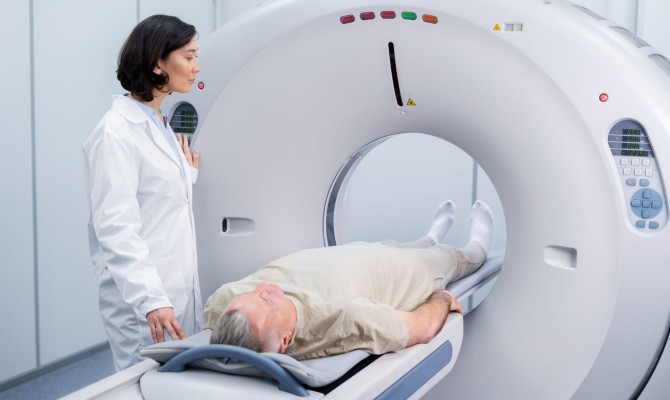Hysterectomy: Types, Process, Benefits and Complications

- Hysterectomy
- 22 Aug 2023
Overview
About Hysterectomy
The uterus, a pear-shaped organ where fetal development occurs during pregnancy, is removed during a hysterectomy. Hysterectomy is among the most frequent gynecological procedures carried out globally. It can be carried out using different techniques and for various medical issues. The various types of Hysterectomy, their mechanics, indications, preparation, technique, contraindications, benefits, drawbacks, restrictions, and potential consequences will all be covered in this article.

Types
Types of Hysterectomy
Depending on the problem being treated, you may need a different form of Hysterectomy. The main types are as follows:
- Total Hysterectomy – During this procedure, the uterus’s cervix and complete body are removed. The most typical kind of Hysterectomy is this one1Types| Researched based study from Asahq.org
- Partial Hysterectomy (subtotal or partial Hysterectomy) – In this procedure, a portion of the uterus is removed, leaving the cervix unharmed.
- Radical Hysterectomy – Radical hysterectomy involves the removal of the uterus, cervix, upper vaginal wall, and surrounding tissues. It is frequently carried out for specific gynecologic malignancies1Types| Researched based study from Asahq.org
Methods
Methods to perform Hysterectomy
There are several ways to execute a hysterectomy, including:
- Abdominal Hysterectomy – An abdominal wall incision is used to perform the procedure. It is the most usual method for a hysterectomy and is appropriate for greater uterine diameters or when other organs need to be evaluated2Methods| Researched based study from Nlm.nih.gov
- Vaginal Hysterectomy – The removal of the uterus via the vaginal canal requires no external incisions. It is preferred when no extra surgery is needed and the uterus is of average size3Methods| Researched based study from Nlm.nih.gov
- Laparoscopic Hysterectomy – This minimally invasive procedure makes minor incisions and removes the uterus using a laparoscope, a narrow tube with a camera4Methods| Researched based study from Brighamandwomens.org
- Robotic-assisted Hysterectomy – This type of laparoscopic surgery uses robotic arms that the physician controls to carry out the process more precisely5Methods| Researched based study from Hopkinsmedicine.org
Uses
Uses & Indications of Hysterectomy
Hysterectomy is advised for several medical issues, which may include:
- Uterine fibroids
- Uterine cancer
- Endometriosis
- Prolapsed uterus
- Chronic pelvic pain
- Abnormal Uterine bleeding
- Chronic pelvic inflammatory disease (PID)
Uterine Fibroids
- Non-cancerous uterine growths result in pressure, bleeding, and discomfort.6Uses| Researched based study from Hopkinsmedicine.org
Uterine Cancer
- For some uterine cancer forms, a hysterectomy may be required.
Endometriosis
- When the uterus lining begins to protrude outside of it, resulting in discomfort and problems with conception.
Chronic Pelvic Pain
- Severe, persistent pelvic pain that is resistant to various therapies.
Prolapsed Uterus
- When there is insufficient pelvic support, the uterus drops into the vaginal canal.7Uses| Researched based study from Nlm.nih.gov
Chronic Pelvic Inflammatory Disease (PID)
- Pelvic Inflammatory Disease (PID) is female reproductive organ inflammation and infection.
Abnormal Uterine Bleeding
- Bleeding that is excessive or irregular that does not improve after trying conservative measures.
Preparation
Preparation before Hysterectomy
A woman might need to do these things before having a hysterectomy :
- A comprehensive medical evaluation includes a physical exam, blood testing, and imaging exams.
- Stop taking any medications that might affect your recovery or ability to have surgery.
- Talk with the surgeon about the surgical method and be aware of any possible drawbacks.
- Discuss how the surgery may affect fertility and the possibility of freezing eggs or embryos before the operation.
- Establish a post-operative and rehabilitation plan.
The Process
Process of Hysterectomy
The steps in a hysterectomy procedure are as follows:
- Anesthesia – The patient is either put to sleep with general anesthesia or numbs the lower half of her body with a regional anesthetic.
- Incision – Depending on the kind of Hysterectomy, an incision may be made in the abdominal or the vaginal canal8The Process| Researched based study from Mayoclinic.org
- Removal of the uterus – The uterus is removed after being carefully removed from nearby tissues and blood arteries.
- Closure – The incisions are stitched, stapled, or glued shut.
Contraindications
Contraindications
Despite being a popular and generally safe treatment, Hysterectomy may not be advised for women if:
- They want to maintain their fertility
- Have Pelvic radiation 4Contraindications| Researched based study from Brighamandwomens.org
- Have a serious lung or heart condition that makes surgery risky
- Severe obesity for a long time 3Contraindications| Researched based study from Nlm.nih.gov
- Had prior pelvic surgery
Benefits
Benefits of Hysterectomy
A hysterectomy can relieve various medical issues, increasing a woman’s quality of life. Some benefits include:
- Relieving persistent pelvic pain and unusual bleeding
- The disappearance of endometriosis and uterine fibroids symptoms 9Benefits| Researched based study from Health.ny.gov
- Successful treatment for several gynecological malignancies
- The avoidance of further pelvic infections in those with persistent PID
Complications
Complications
Although hysterectomy provides many benefits, there are some downsides and limitations as well:
- Infection – Infections could develop at the surgery site or around the pelvis10Complications| Researched based study from Clevelandclinic.org
- Bleeding – Blood transfusions or extra procedures may be needed if a patient bleeds excessively during or after surgery11Complications| Researched based study from Medlineplus.gov
- Injury to nearby organs – During surgery, it’s possible to unintentionally harm blood vessels, the bladder, or the colon.
- Infertility – Hysterectomy causes infertility, which prevents a woman from becoming pregnant and carrying it to term.
- Emotional impact – After removing their uterus, some women could feel emotionally distressed and feel a sense of loss.
- Hormonal changes – Removing the uterus, mainly if the ovaries are done simultaneously, may result in hormonal abnormalities.
- Decreased interest in sex – Particularly if the ovaries are removed after a hysterectomy, some women experience vaginal dryness or decreased sex interest11Complications| Researched based study from Medlineplus.gov
- Vaginal cuff dehiscence – is a very uncommon complication in which the surgical incision on the vagina reopens12Complications| Researched based study from Nlm.nih.gov
- Vaginal shortening – The length of the vagina may get shorter when the uterus is removed.
- Increased risk of other health problems – If both ovaries are removed, you may be more susceptible to developing diseases like bone loss, heart disease, and urinary leakage.
The risk of complications is higher for some women than the others. For instance, women with an underlying medical condition may be more susceptible to anesthesia-related issues.
Bottom line
The Bottom Line
Hysterectomy reduces symptoms, including persistent pain, unusual bleeding, and uterine growth, and can significantly raise a woman’s quality of life. However, patients and their healthcare providers must have an in-depth conversation about the treatment, its indications, and any potential problems. Before deciding on a hysterectomy, women should also carefully evaluate their fertility goals and look into non-invasive procedures. In every situation, making an educated choice and following the proper medical advice will guarantee the best outcome for the patient.
Any feedback on this article?
 This Articles content was accurate
This Articles content was accurate Very Informative Article
Very Informative Article I have a question or a comment
I have a question or a comment
 This article contains inaccurate content
This article contains inaccurate content This article was not helpful
This article was not helpful I have a question or a comment
I have a question or a comment
We appreciate your helpful feedback!
Checkout our social pages
References
-
American Society of Anesthesiologists
Hysterectomy | Types
-
National Library of Medicine
Abdominal Hysterectomy | Methods
-
National Library of Medicine
Vaginal Hysterectomy | Methods
-
Brigham and Women's Hospital
Laparoscopic Hysterectomy | Methods
-
John Hopkins Medicine
Robotic Hysterectomy | Methods
-
John Hopkins Medicine
Hysterectomy | Uses
-
National Library of Medicine
Indications of hysterectomy | Uses
-
Mayo Clinic
Abdominal hysterectomy | The Process
-
Department of Health, New York State
Should you have a hysterectomy? | Benefits
-
Cleveland clinic
Hysterectomy | Complications
-
Medline Plus
Hysterectomy | Complications
-
National Library of Medicine
Vaginal Cuff Dehiscence: Risk Factors and Associated Morbidities | Complications




































